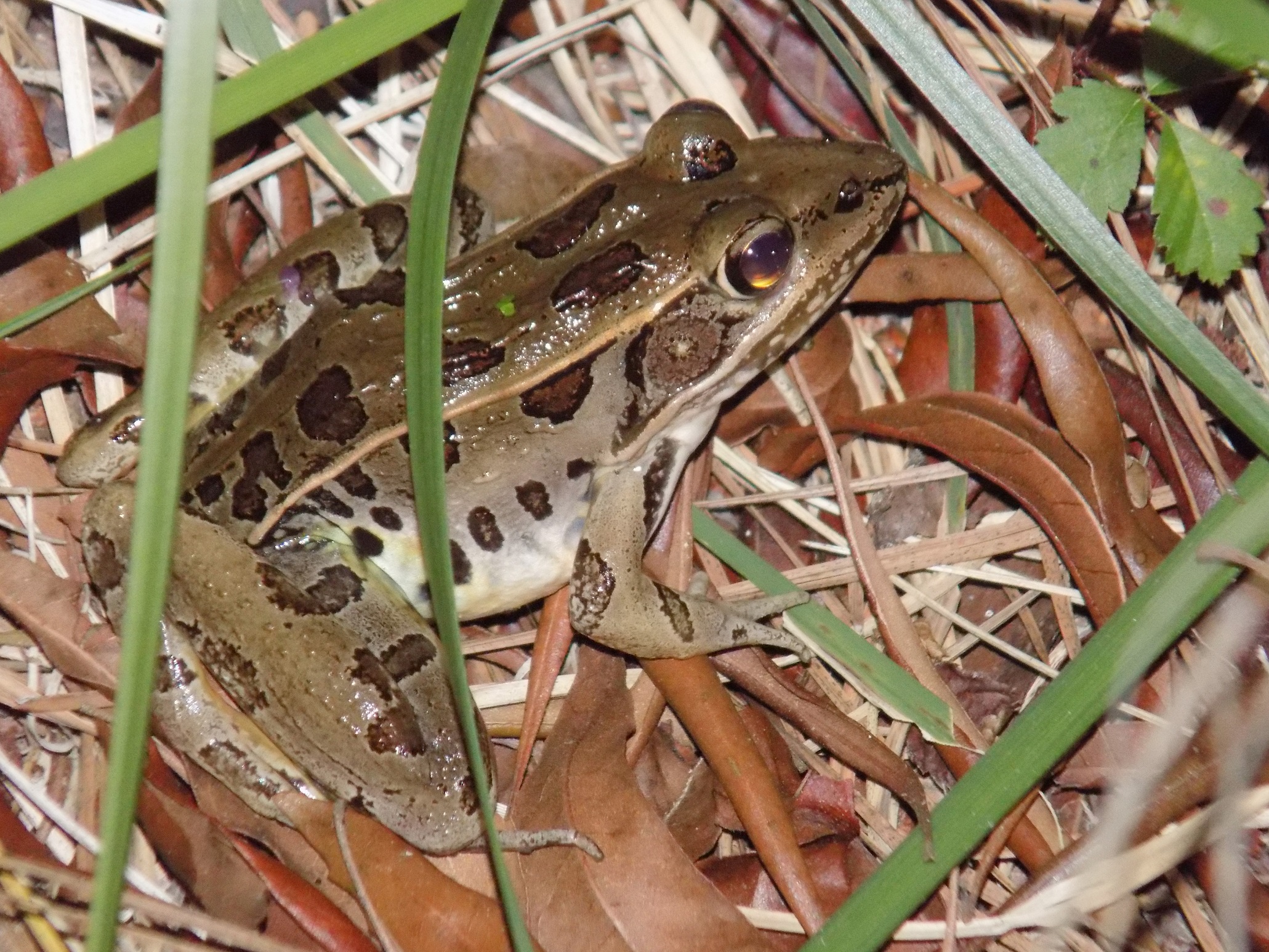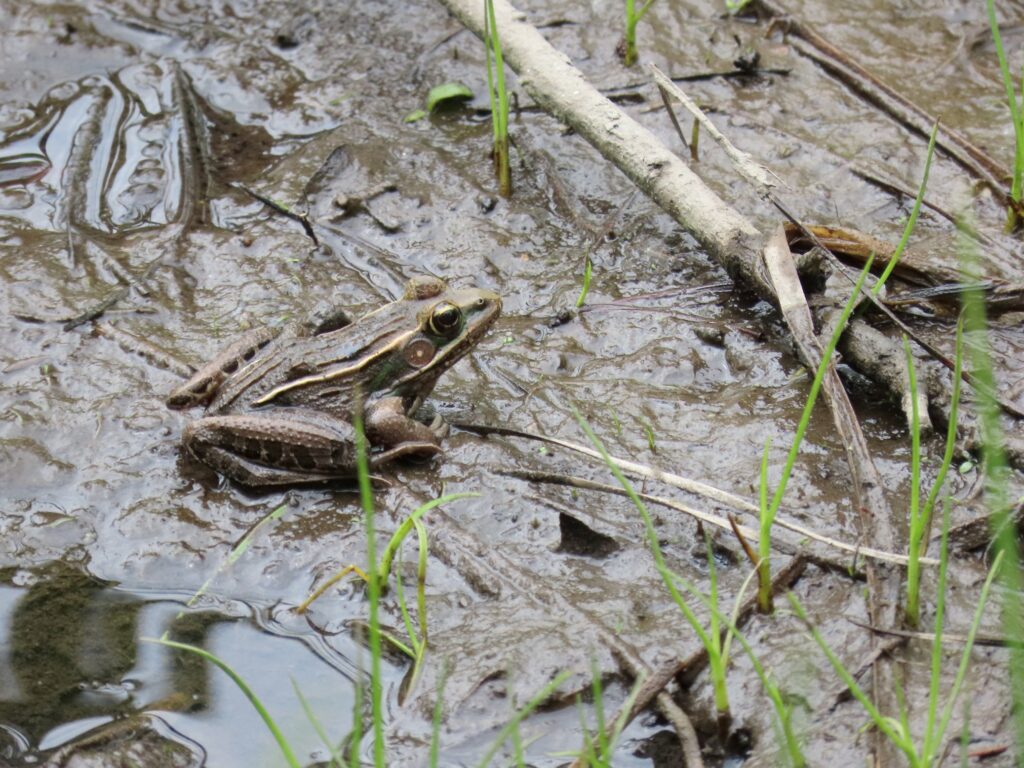




This week for Flora and Fauna Friday we’ve got a long-legged leopard-printed night-goer, the Southern Leopard Frog (Lithobates sphenocephalus).
The Southern Leopard Frog can be found all across South Carolina. They are not picky about habitat and can be found in pretty much any semi-permanent body of freshwater in the Lowcountry. They are also surprising salt tolerant for an amphibian and can even live in an array of brackish wetlands. Our Leopard Frog is the easiest to identify of the “true frogs” of the genus Lithobates. They’re roughly three inches in length and have a distinctive pointed head, with the specific epithet of their Latin name “spenocephalus” meaning “wedge-head”. Southern Leopard Frogs are primarily bronze in color and sometimes a pine-green along the spine, with two raised ivory-white lines down each side of their back and small dark-brown blotches across the body. These blotches giving it the “leopard” part of the common name. The call of our Leopard Frog is unmistakable, sounding like someone flicking the teeth on a plastic comb, except low pitched and variable in tone. Like most frogs, the best time to see and hear a Leopard Frog is at night following heavy rains. However, Leopard Frogs are also fairly active in the day and can often be spotted on pond banks and ditch edges, usually as they jump out of sight. Like most frogs, their primary defense mechanism is jumping. This allows them to shoot off the ground and move several feet in an instant, generally in the direction of the nearest body of water. Leopard Frogs primarily eat insects, spiders, worms, and other invertebrates. They usually hunt by ambush, posting up beside a wetland and allowing the prey to come to them. Frogs and Toads have a sticky tongue which they are able to flick out and whip back, drawing food into their mouth.
Leopard Frogs prefer to lay eggs in shallow ephemeral wetlands. Ephemeral wetlands are lowland areas which dry up entirely during the year. More particularly, frogs and other amphibians like to breed in isolated ephemeral wetlands. These are areas that are disconnected and distant from permanent wetlands and generally only fill with water after prolonged heavy rains. These conditions are important to the frog because it means there are no fish, which are the number one predator of their eggs and tadpoles. Non-isolated ephemeral wetlands, like floodplains and marshes, often flood when a nearby permanent wetland overflows or a stream breaches its banks. Within those floodwaters comes fish and fish eggs, which populate the ephemeral wetland and feed on the frogs and their offspring. Isolated ephemeral wetlands have less risk of fish establishing and so are often a safer bet for a baby frog nursery.